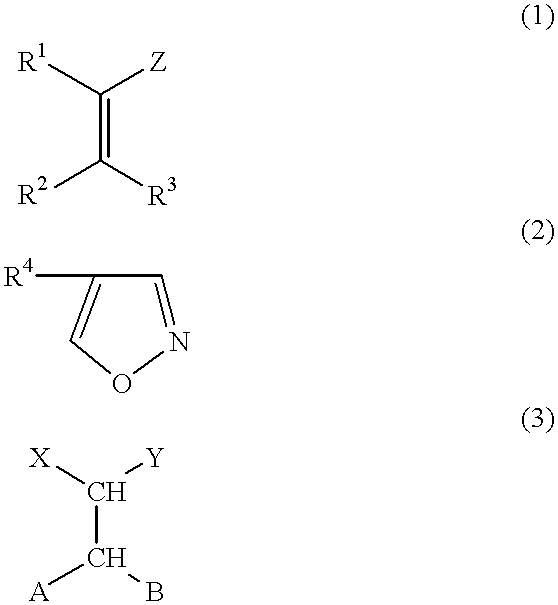Photothermographic material
a technology of photothermographic materials and organic solvents, applied in the field of photothermographic materials, can solve the problems of low blacking density in exposed areas, disadvantages in view of cost, and adverse effects of organic solvents on human bodies
- Summary
- Abstract
- Description
- Claims
- Application Information
AI Technical Summary
Problems solved by technology
Method used
Image
Examples
example 1
[0240] >
[0241] In 700 mL of water, 11 g of alkali-treated gelatin (calcium content: 2700 ppm or less), 30 mg of potassium bromide and 1.3 g of sodium 4-methylbenzenesulfonate were dissolved. After the solution was adjusted to pH 6.5 at a temperature of 40.degree. C., 159 mL of an aqueous solution containing 18.6 g of silver nitrate and an aqueous solution containing 1 mol / L of potassium bromide, 5.times.10.sup.-6 mol / L of (NH.sub.4).sub.2RhCl.sub.5(H.sub.2O) and 2.times.10.sup.-5 mol / L of K.sub.3IrCl.sub.6 were added by the control double jet method over 6 minutes and 30 seconds while pAg was maintained at 7.7. Then, 476 mL of an aqueous solution containing 55.5 g of silver nitrate and an aqueous solution containing 1 mol / L of potassium bromide and 2.times.10.sup.-5 mol / L of K.sub.3IrCl.sub.6 were added by the control double jet method over 28 minutes and 30 seconds while pAg was maintained at 7.7. Then, the pH was lowered to cause coagulation precipitation to effect desalting, 51.1...
example 2
[0326] The same samples as used in Example 1 were exposed by using a cylinder external surface scanning type multichannel exposure apparatus (provided with 30 of 50 mW semiconductor laser heads, laser energy density on the photothermographic material surface: 75 .mu.J / cm.sup.2), and subjected to heat development in the same manner as in Example 1. As a result, the photothermographic materials of the present invention substantially reproduced the results of Example 1, and thus the advantages of the present invention were clearly demonstrated.
[0327] As explained above, according to the present invention, there is provided a photothermographic material that can provide photographic performance suitable for use in photomechanical processes, i.e., superior storability before development and little temperature and humidity dependency of character line width during development. There is also provided a photothermographic material that can be obtained by coating with an aqueous system, whic...
PUM
 Login to View More
Login to View More Abstract
Description
Claims
Application Information
 Login to View More
Login to View More - R&D
- Intellectual Property
- Life Sciences
- Materials
- Tech Scout
- Unparalleled Data Quality
- Higher Quality Content
- 60% Fewer Hallucinations
Browse by: Latest US Patents, China's latest patents, Technical Efficacy Thesaurus, Application Domain, Technology Topic, Popular Technical Reports.
© 2025 PatSnap. All rights reserved.Legal|Privacy policy|Modern Slavery Act Transparency Statement|Sitemap|About US| Contact US: help@patsnap.com



